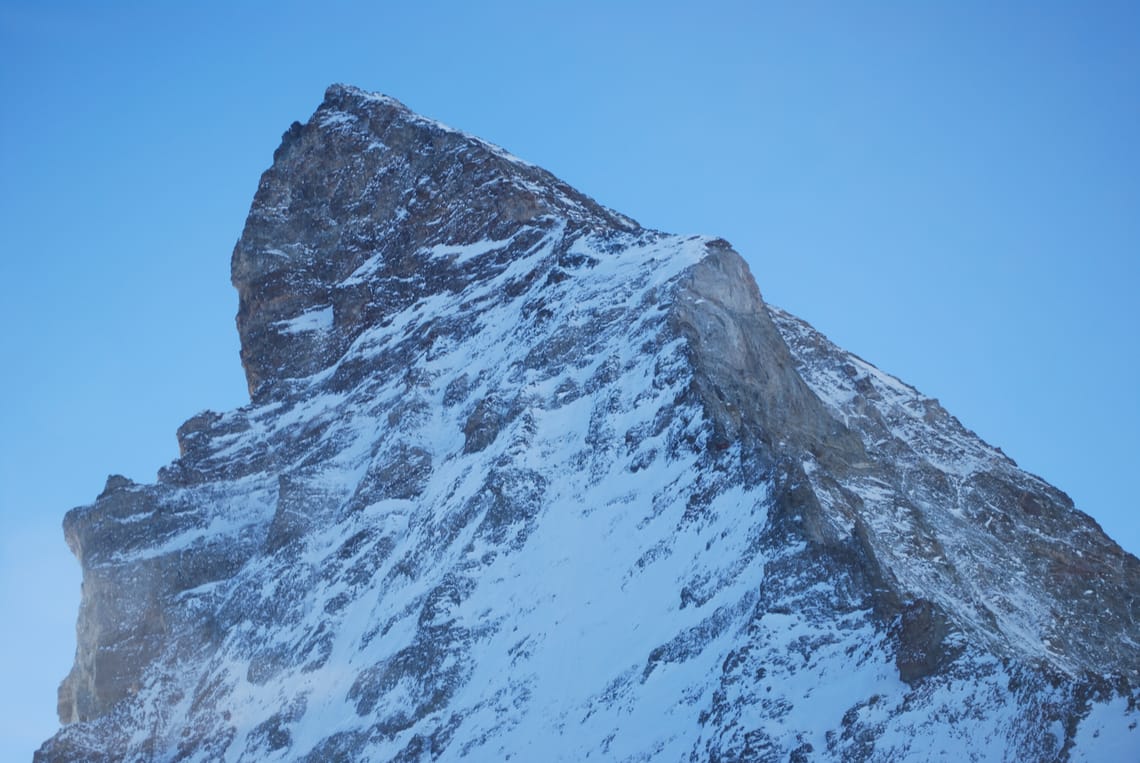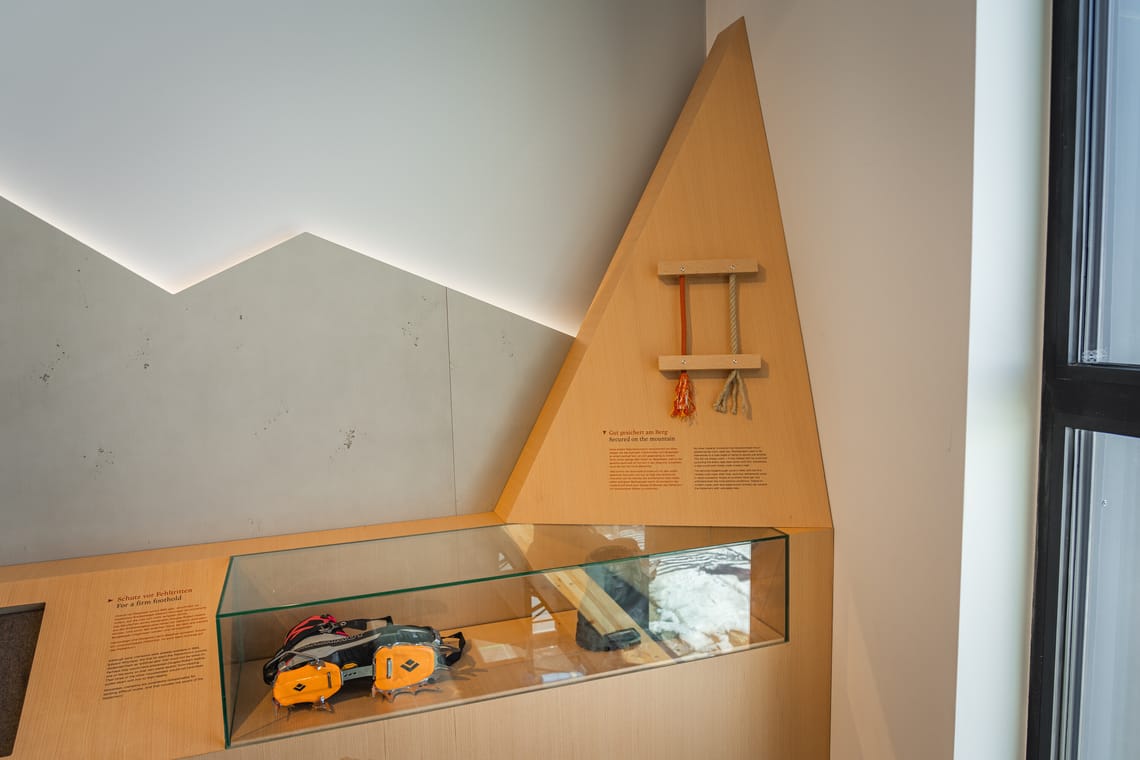Climbing the Matterhorn
Undiminished fascination
Much has changed since the first ascent in 1865. The fascination of the Matterhorn remains undiminished.
The Matterhorn attracts mountaineers from all over the world. The ascent used to be a daring, high-risk venture, but nowadays it is feasible for many ambitious climbers. This is largely due to improvements in their equipment.

Matterhorn close up
Solo ascent with a companion
In March 1965, Walter Bonatti completed a solo ascent of the north face — alone except for the teddy bear in his backpack. He said it was exactly the mental support that he needed.
Africa inside
The rock of the Matterhorn summit is African in origin. It consists entirely of remnants of the African tectonic plate.
Never lets you down
Air Zermatt rescues 500 people a year by winching them up to safety.

Air Zermatt
From 8 to 89
The youngest person to have reached the peak is Kevin Lauber, who climbed the Matterhorn at the age of eight. The oldest is Ulrich Inderbinen, who enjoyed the view from the summit at the age of 89.
Go up the easy way, in a gondola?
There really were plans to do so! The Swiss Federal Assembly approved a proposal for cable car access in 1892, without much argument. However, 68,000 members of the public signed a petition and successfully prevented its construction.
Perfectly aligned!
The four faces of the Matterhorn correspond exactly to the points of the compass: north, south, east and west.
3000 people climb the Matterhorn every summer. If they stood on each other’s shoulders, they would tower over the summit.
Close to heaven
In 1889, the future Pope Pius XI answered the call of the Matterhorn … and reached the summit.
Secured on the mountain
No other material innovation has revolutionised mountaineering like nylon rope has. Mountaineers used to tie themselves to a rope made of hemp to secure one another. This did not always work — if one climber fell, he could end up pulling the entire rope team down with him. Sometimes, a rope would even break under a heavy load. The technical breakthrough came in 1940 with the first twisted nylon rope. After that, technical refinements came in rapid succession. Ropes of synthetic fibre can now withstand even the most adverse conditions. Thanks to modern ropes, even less-experienced climbers can ascend the Matterhorn with calculable risks.
Fabrics for epics, old and new
The first climbers wore woollen sweaters against the cold. They were scratchy and heavy — and they soaked up rainwater like a sponge.
Nothing like today’s synthetic fabrics, such as Gore-Tex or softshell textiles, which offer reliable protection from cold, wind and moisture. Clothes made from these materials are also lightweight and comfortable. When it comes to underwear, however, there is a trend back to natural products. More and more manufacturers are discovering the advantages of merino wool and its excellent temperature management.
For a firm foothold
Although early crampons were already available in 1865, Edward Whymper, the first to reach the Matterhorn’s summit, disdained them as ‘artificial aids’ that could not be relied on. Perhaps they would have prevented Douglas Robert Hadow, one of the party on that very same ascent, from slipping. Then three of the other mountaineers would not have been pulled down with him to their deaths.
Nowadays, crampons are considered indispensable for tackling difficult routes. And that includes the ascent of the Matterhorn.

Mountain boots for climbing the Matterhorn - Zooom the Matterhorn exhibition
